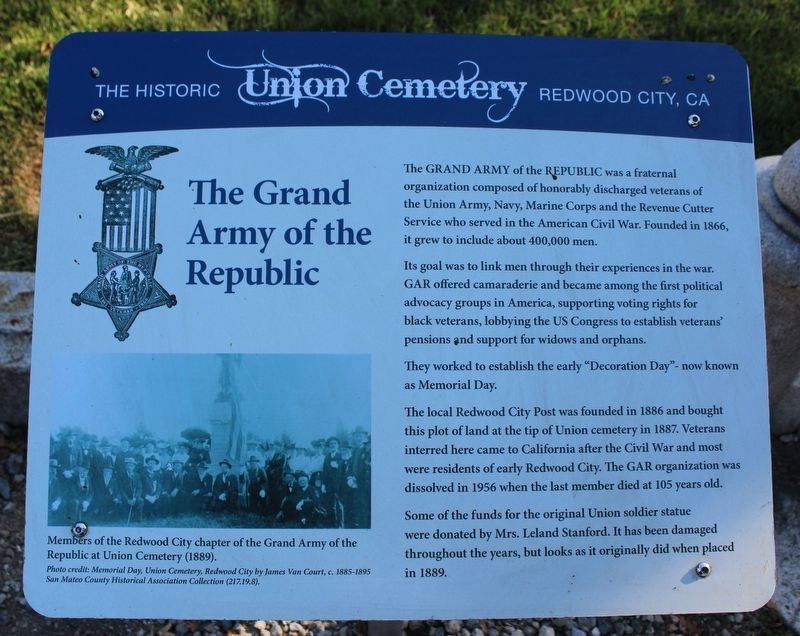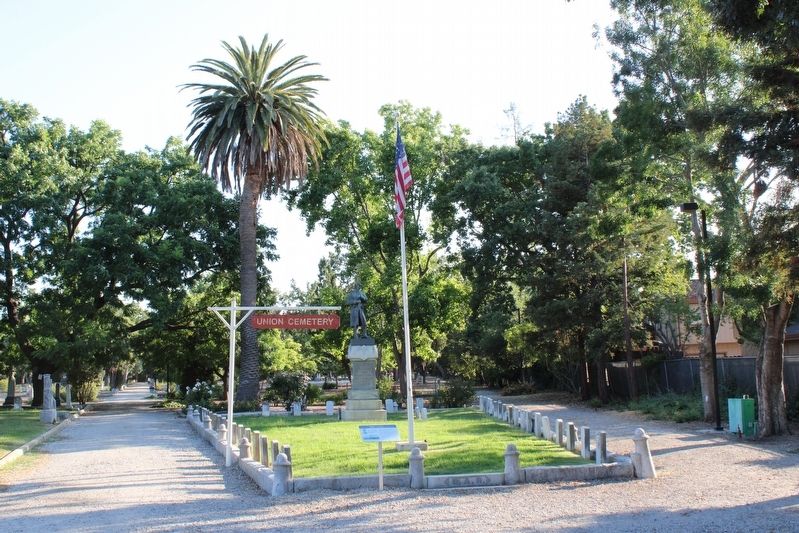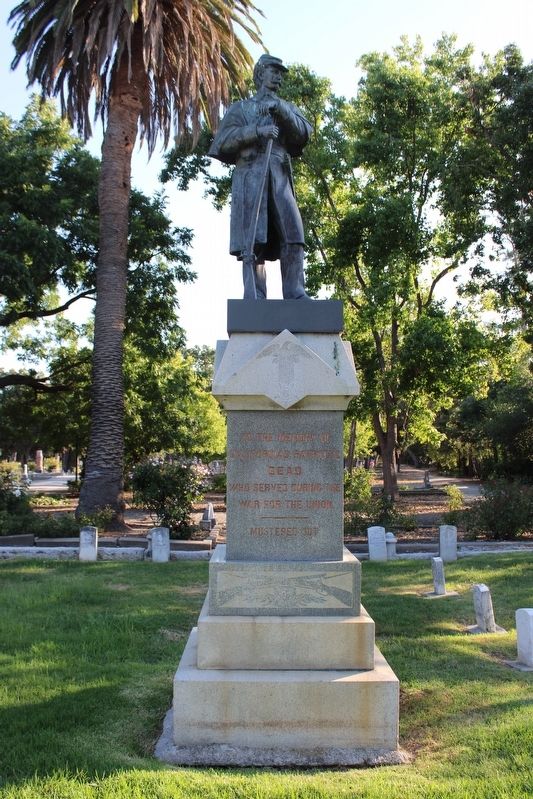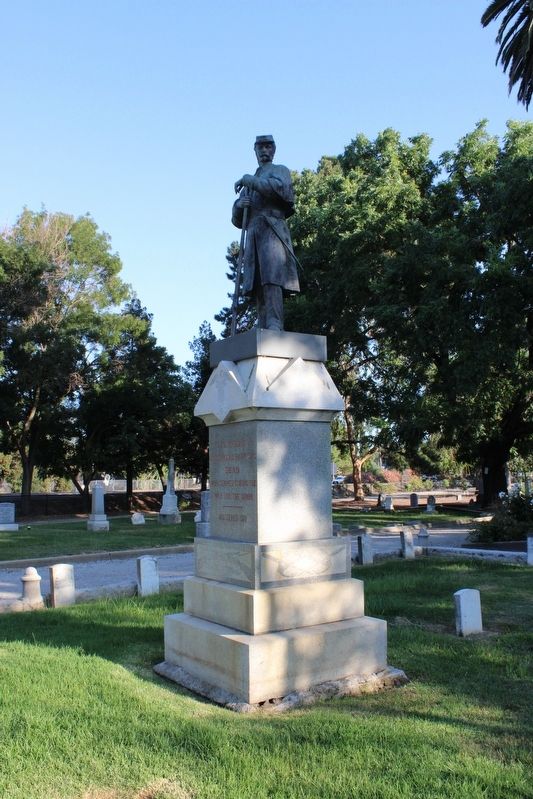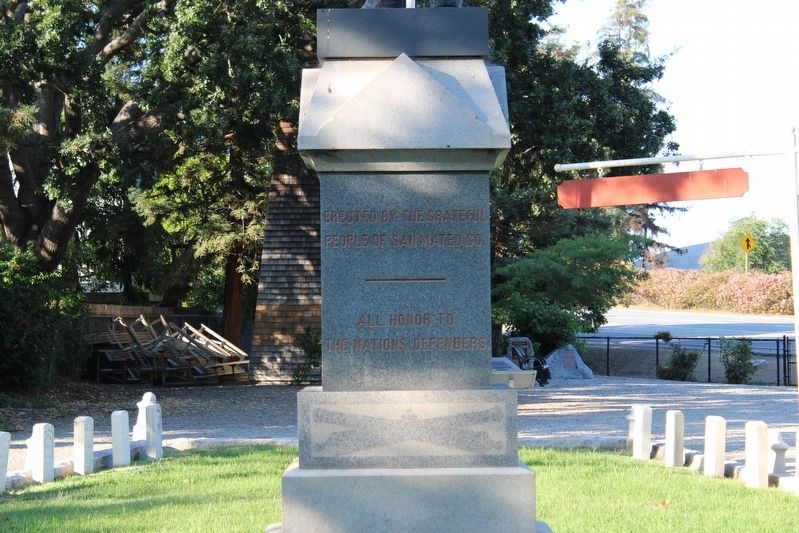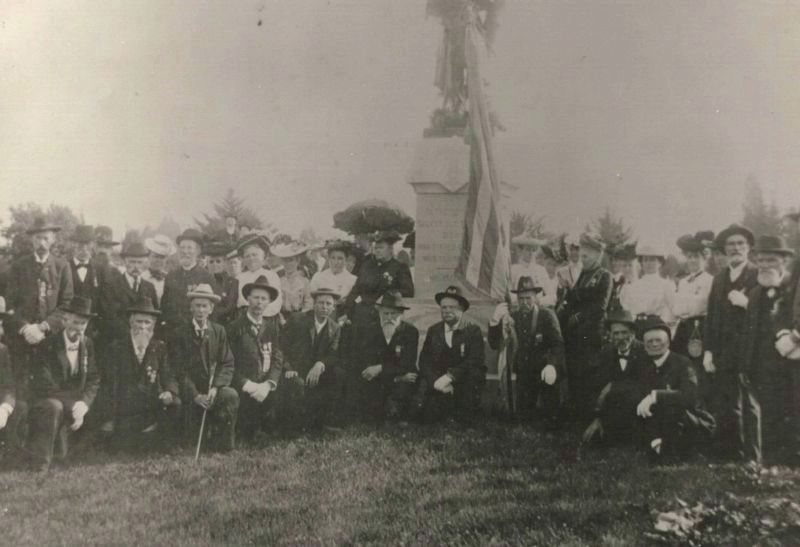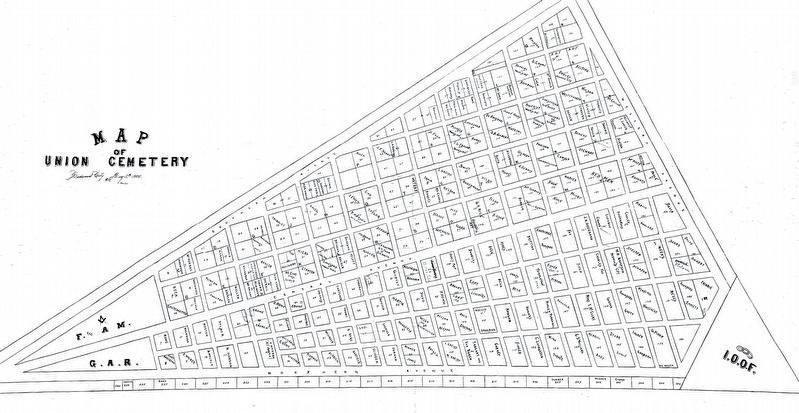Redwood City in San Mateo County, California — The American West (Pacific Coastal)
Grand Army of the Republic
The Historic Union Cemetery
— Redwood City, CA —
Its goal was to link men through their experiences in the war. GAR offered camaraderie and became among the first political advocacy groups in America, supporting voting rights for black veterans, lobbying the US Congress to establish veterans’ pensions and support for widows and orphans.
They worked to establish the early “Decoration Day” – now known as Memorial Day.
The local Redwood City Post was founded in 1886 and bought this plot of land at the tip of Union cemetery in 1887. Veterans interred here came to California after the Civil War and most were residents of early Redwood City. The GAR organization was dissolved in 1956 when the last member died at 105 yeas old.
Some of the funds for the original Union Soldier statue were donated by Mrs. Leland Stanford. It has been damaged throughout the years, but looks as it originally did when placed in 1889.
(caption)
Members of the Redwood City chapter of the Grand Army of the Republic at Union Cemetery (1889). Photo credit: Memorial Day, Union Cemtery, Redwood City by James Van Court, c. 1885-1895 San Mateo County Historical Association Collection (217.19.8)>
Topics and series. This historical marker is listed in these topic lists: Cemeteries & Burial Sites • Fraternal or Sororal Organizations • Patriots & Patriotism • War, US Civil. In addition, it is included in the The Grand Army of the Republic series list. A significant historical year for this entry is 1886.
Location. 37° 28.478′ N, 122° 13.361′ W. Marker is in Redwood City, California, in San Mateo County. Marker can be reached from Woodside Road (California Route 84) north of Hess Road, on the right when traveling south. Located at the north edge of the G.A.R. plot in Historic Union Cemetery. Touch for map. Marker is at or near this postal address: 316 Woodside Road, Redwood City CA 94061, United States of America. Touch for directions.
Other nearby markers. At least 8 other markers are within walking distance of this marker. Grand Army of the Republic Memorial (a few steps from this marker); Solari Family Windmill (a few steps from this marker); Solari Windmill (a few steps from this marker); In Memoriam George Edgar Filkins (within shouting distance of this marker); Union Cemetery (about 700 feet away, measured in a direct line); Stage Station (approx. 0.6 miles away); Fire Station No. 1 (approx. 0.7 miles away); Diller's Island (approx. 0.7 miles away). Touch for a list and map of all markers in Redwood City.
Also see . . .
1. Union Cemetery.
"The Grand Army of The Republic received an annual grant of $100 from the county for upkeep of its plot. Certainly GAR was the most visible entity with their annual Memorial Day march from the Congregational Church (which stood on the northwest corner of Middlefield and Jefferson), to the cemetery and members were a colorful lot with all of them wearing company uniforms that they received during the Civil War."(Submitted on July 19, 2022, by Joseph Alvarado of Livermore, California.)
2. Library of Congress: Grand Army of the Republic and Kindred Societies. "The Grand Army of the Republic (GAR) quickly became the preeminent veterans' organization formed at the close of the Civil War." (Submitted on July 20, 2022, by Joseph Alvarado of Livermore, California.)
3. GAR on Wikipedia. The GAR initially grew and prospered as a de facto political arm of the Republican Party during the heated political contests of the Reconstruction Era. The commemoration of Union Army and Navy veterans, black and white, immediately became entwined with partisan politics. The GAR promoted voting rights for Black veterans, as many white veterans recognized their demonstrated patriotism and sacrifices, providing one of the first racially integrated social/fraternal
organizations in America. Black veterans, who enthusiastically embraced the message of equality, shunned black veterans' organizations in preference for racially inclusive and integrated groups. But when the Republican Party's commitment to reform in the South gradually decreased, the GAR's mission became ill-defined and the organization floundered. The GAR almost disappeared in the early 1870s, and many state-centered divisions, named "departments", and local posts ceased to exist. (Submitted on July 20, 2022, by Joseph Alvarado of Livermore, California.)
Credits. This page was last revised on July 21, 2022. It was originally submitted on July 19, 2022, by Joseph Alvarado of Livermore, California. This page has been viewed 113 times since then and 25 times this year. Photos: 1, 2, 3, 4, 5, 6, 7. submitted on July 20, 2022, by Joseph Alvarado of Livermore, California. • Bernard Fisher was the editor who published this page.
